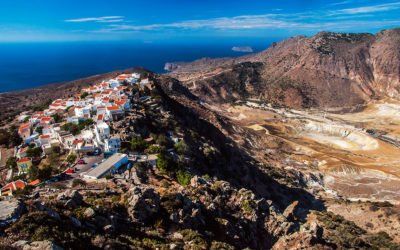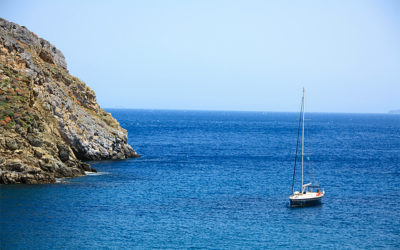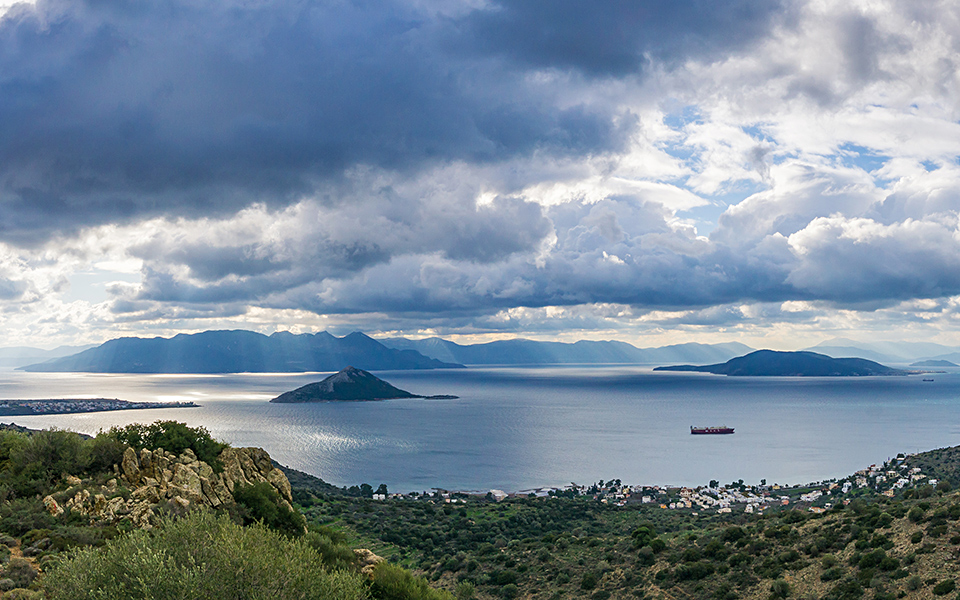
Destinations
Living Like a Local – Winter Weekends on Aegina
It’s not a secret that a lot of the Greek people you meet on the islands in the summer don’t live there during winter. Some are there on vacation, others split the year between their summer homes and their city apartments, and many are just there for work during tourist season.
When September ends, most of them are gone, and in October you get the first glimpse of an island’s “soul” – how the true locals live, and the naked natural beauty devoid of the clutter of sun beds, tour buses, and the constant tock-tock of beach rackets.
The autumn and winter is the best time to experience local culture without the hustle and bustle of hordes of tourists. The small amount of people also makes some of these islands the perfect places to rest. “My island” (as Greeks usually refer to the place where their grandparents grew up) is Aegina.
Only about an hour away from Piraeus, Aegina is the perfect last-minute getaway for Athenians during the summer and, unsurprisingly, it gets really busy. In the winter however, it’s like an entirely different island. I like to go to Aegina to clear my mind, spend some time alone, go for long walks, and breathe the fresh air.
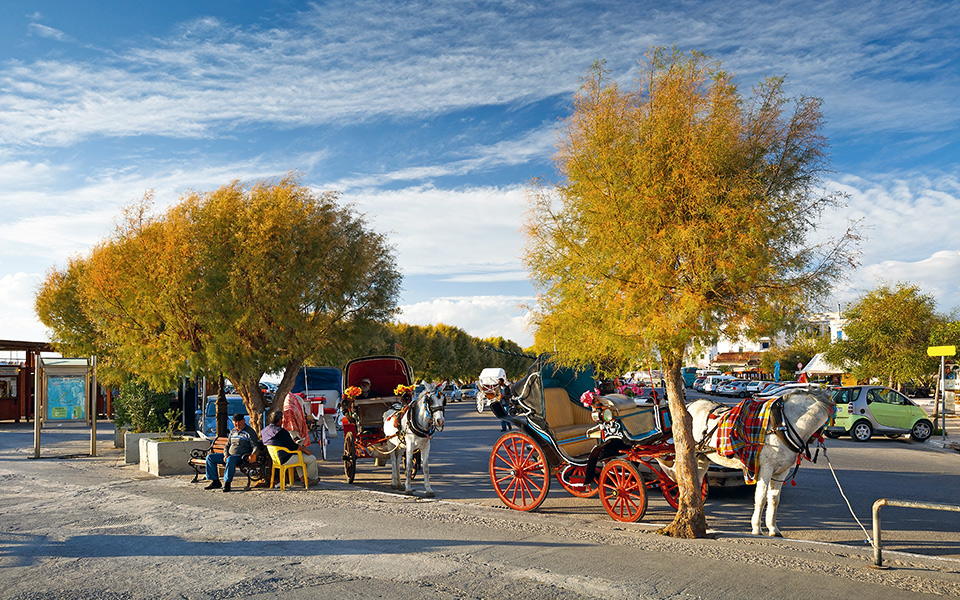
Fall in Aegina town. © Shutterstock
HOW TO SPEND A WINTER / AUTUMN WEEKEND ON AEGINA
Rather than staying at a hotel, rent a home with a view. During the winter, prices go way down and you can easily find a beautiful house to rent for just 50 euros per night. If you are prepared to pay 100, you can live like a countryside king in a large stone-built luxury villa on the side of the mountain.
I recommend the area of Pachia Rachi, Tsikides, or Marathonas. Hotels and houses in the town of Aegina are easier to access, but if you’re prepared to bring or rent a car, staying further away is worth it for the sake of the serenity.
A nice house with a fireplace is undoubtedly a great excuse to stay indoors, but if you’ve followed my advice and rented a home in Pachia Rachi, you’re in the perfect place to do some hiking. Follow the dirt road down the mountain, and you’ll reach Eleonas; an ancient olive grove with thousand-year-old trees. If you head up Mount Oros, just south of the village, you’ll be rewarded with a 360-degree-view of the island.
Another reason to get out of the house is to enjoy a meal at one of the two tavernas in Anitseo, the next village up the asphalt road. The first one, called Petrino, has the best view, whereas the next one, in the center of the tiny village, called Steki tou Kinigou, has the best T-bone steak and a lovely fireplace.
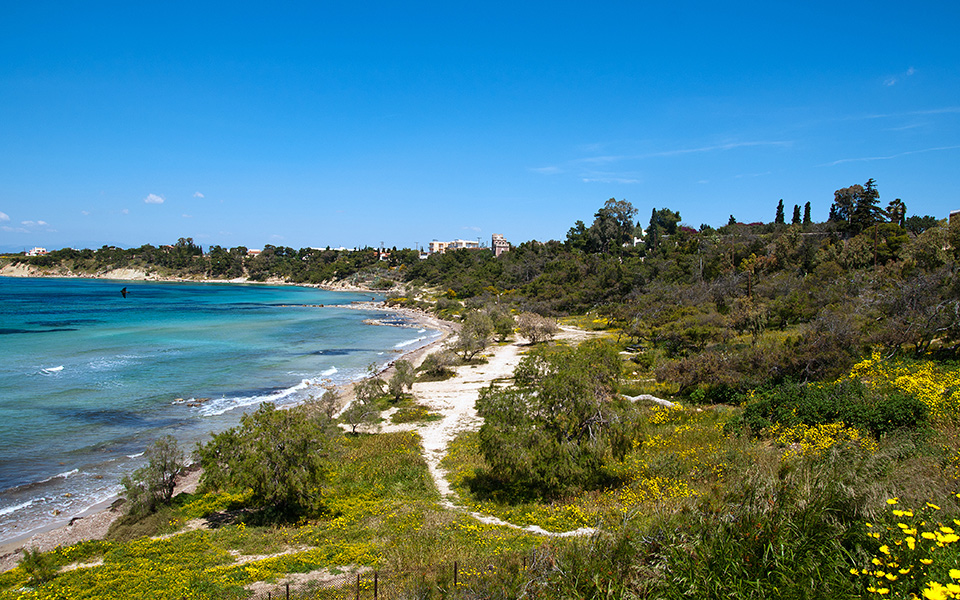
Winter view of Kolonna beach in Aegina. © Shutterstock
Other places to enjoy authentic Greek winter cuisine is Argyris in Mesagros (for home-cooked style lamb in the oven and rooster in tomato sauce), Vatzoulias in Asomatos, just above town (for anything served with long macaroni), and the indoor space at Manitas by the sea (for soups, chickpea stew, and beef in tomato sauce).
Walking (or running, if you’re into that) by the sea is the kind of thing that creates peace of mind. While only a few stretches of the coastal road have proper sidewalks, there is very little traffic during winter, and you could literally spend a whole day walking from Vagia on the north-eastern side to Perdika in the south west (a rather long walk) and barely see a car.
I like to break up my, not quite so long, walk with a little picnic on the beach. Nothing extravagant, just water and some fruit or pistachios; something not too heavy to carry around. If you start your walk from Aegina town, buy your fruit from one of the fishing-boats-turned-grocers in the port, and your local pistachios from the shop, Mourtzis just above the fish market.
If you feel the need to surround yourself with people, of course, that is still possible. Some restaurants, bars, and cafés close during winter, but there are still a lot of places open in Aegina Town. Too many, some might say, as there’s never enough people to fill all of the tables. In order to win customers, restaurants and bars hire live musicians, and do other weekly themed nights.
The locals know the program by heart, and follow it quite loyally – partly to share their support around all of the different venues (which are owned by friends), but also to ensure that they’re all at the same place at the same time. Staying in the island all winter can get lonely, but this creates the illusion of a busy place, even if you’re seeing the same faces every night.
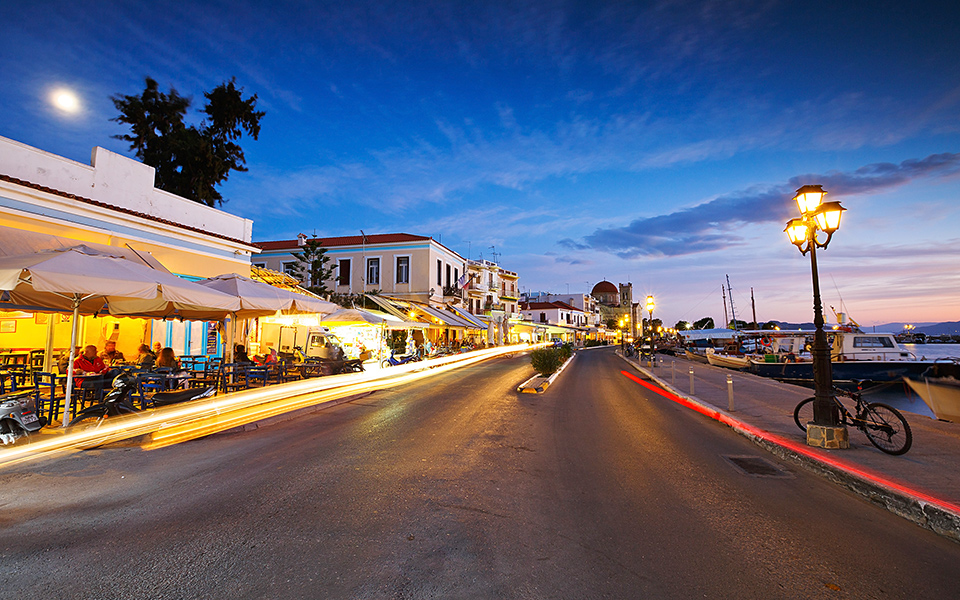
Winter evening in Aegina town. © Shutterstock
TO MEET THE LOCALS, GO HERE:
On Friday nights, Avli is the place to go. They usually have live musicians playing from around 22.00 o’clock until late on Fridays, but even if they don’t, you’ll never be alone here. Locals of all ages come here for the relaxed atmosphere, unpretentious food, and cold beer.
Going out on a Saturday, you’ll find live music playing at various places. For meze-style food and traditional Greek spirits, try Bakalogatos or Kriton Gevseis. If you prefer a DJ, the busiest bars are usually Caps Love (turn left away from the port after the large Panagitsa church – but beware, spontaneous karaoke occurs here), Remvi, Vartan, and Ellinikon Vintage (turn left above the football field – for those after midnight drinks).
On Sunday afternoons – many people’s only day off – locals gather at the seafront cafés. Nisos is a favorite with good coffee and excellent snacks – perfect for brunch. In the evening, most locals choose between Remvi or Vartan (or split their time between both). At Remvi, a seaside café and bar next to Panagitsa church, various pop singers draw crowds, and at Vartan, it’s become a custom to spend Sunday night drinking “rakomelo”; a traditional, hot potion made from Cretan raki and honey.


